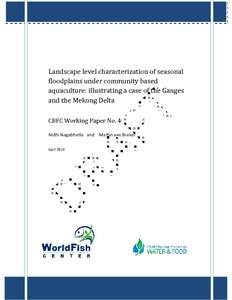Land, soil and water management
This chapter reviews relevant Vertisol properties, experimental results and the overall experience of the project on this subject. There are several types of drainage problems in Vertisols whose magnitude may vary from site to site. Drainage improvement is discussed in relation with camber beds, broadbeds and furrows, field depressions, perched watertable, open ditches, height of beds, soil erosion and supplemental irrigation. The need for water shed development projects is also examined.
Land degradation: A challenge to Ethiopia
Land degradation is a great threat for the future and it requires great effort and resources to ameliorate. The major causes of land degradation in Ethiopia are the rapid population increase, severe soil loss, deforestation, low vegetative cover and unbalanced crop and livestock production. Inappropriate land-use systems and land-tenure policies enhance desertification and loss of agrobiodiversity. Utilization of dung and crop residues for fuel and other uses disturbs the sustainability of land resources. The supply of inputs such as fertilizer, farm machinery and credits are very low.
La ganadería intensiva basada en praderas como una opción sostenible de diversificación para la zona cafetera colombiana
La investigación que logró los productos de desarrollo de las actividades del CIAT y de sus socios colaboradores en los Llanos de Colombia
Land resources, soils and their management in the Amazon region: a state of knowledge report
Las comunidades de lombrices en las sabanas nativas y en los pastizales introducidos de los Llanos Orientales de Colombia
Linking soil erosion to on-site financial cost: lessons from watersheds in the Blue Nile Basin
The study was conducted in three watersheds (Dapo, Meja and Mizewa) in the Ethiopian part of the Blue Nile Basin to estimate the on-site cost of soil erosion using the productivity change approach, in which crop yield reduction due to plant nutrients lost with the sediment and runoff has been analysed. For this purpose, runoff measurement and sampling was conducted during the main rainy season of 2011 at the outlet of two to three sub-watersheds in each watershed. The sediment concentration of the runoff, and N and P contents in runoff and sediment were determined.
Le marché domestique du sciage artisanal au Cameroun: État des lieux, opportunités et défis
Le Cameroun a adopté une nouvelle loi des forêt en 1994 qui mettait l’accent sur le secteur forestier industriel, à grande échelle, et orienté vers l’exportation, tout en négligeant le bois produit avec des opérations d’échelle plus petite, pour le marché intérieur. Ce bois n’est pas enregistrée dans les statistiques officielles et il est principalement produit sans titre valide d’exploitation.
Le marché domestique du sciage artisanal en République du Congo: État des lieux, opportunités et défis
La République du Congo a adopté une loi forestière en 2000 qui met l’accent sur le secteur forestier industriel à grande échelle orienté vers l’exportation. Le bois d’oeuvre tiré d’une exploitation à plus petite échelle et tourné vers le marché intérieur a été négligé. Ce bois n’est pas enregistré dans les statistiques officielles et il est essentiellement produit sans titre valide. Or le Congo a paraphé en 2009 puis signé en 2010 l’Accord de partenariat volontaire (APV) avec la Commission européenne qui l’engage à assurer la légalité de toute la production nationale de bois d’ici à 2013.





